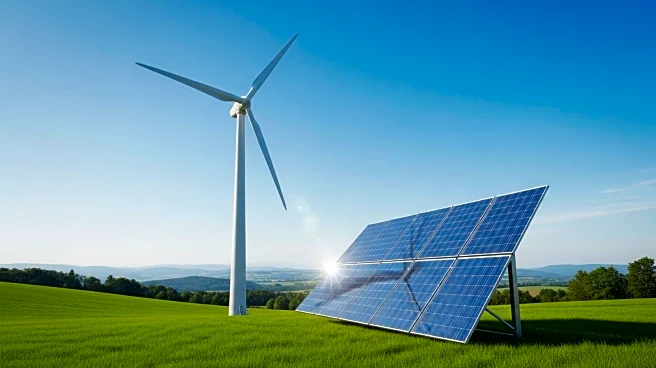What's Happening?
Northeast Indiana is embracing a balanced energy strategy to address the rapidly evolving energy landscape. The region is experiencing increased demand for reliable and affordable electricity due to economic expansion and the deployment of advanced technologies. The 2023 Indiana Resource Plan highlights the accelerated retirement of traditional power generation sources and a widening gap between supply and demand. To address these challenges, Northeast Indiana is adopting an 'All of the Above' energy strategy, leveraging a mix of energy sources, including solar, to enhance grid reliability and support economic growth.
Why It's Important?
The adoption of a balanced energy strategy is crucial for Northeast Indiana's long-term economic success. By diversifying its energy portfolio, the region can build resilience, protect ratepayers, and remain competitive in a global economy. The strategy also aligns with the sustainability goals of industries looking to invest in the region, as access to renewable energy becomes a priority. This approach ensures that Northeast Indiana can meet the growing energy needs of its expanding economy while supporting local schools, infrastructure, and public services through long-term tax revenue from solar projects.
What's Next?
Northeast Indiana's energy strategy will require collaboration between local governments, utility companies, and industry leaders to implement effectively. The region will need to invest in modern grid infrastructure and next-generation baseload power to support its energy goals. As federal investments in transmission and infrastructure progress, Northeast Indiana will need to position itself to capitalize on these improvements and attract new business opportunities.
Beyond the Headlines
The shift towards a balanced energy strategy reflects broader trends in the U.S. energy sector, where regions are increasingly prioritizing sustainability and resilience. This transition poses challenges, such as balancing environmental concerns with economic growth and ensuring equitable access to energy resources. The strategy also highlights the importance of local leadership in driving energy innovation and addressing the unique needs of regional economies.












